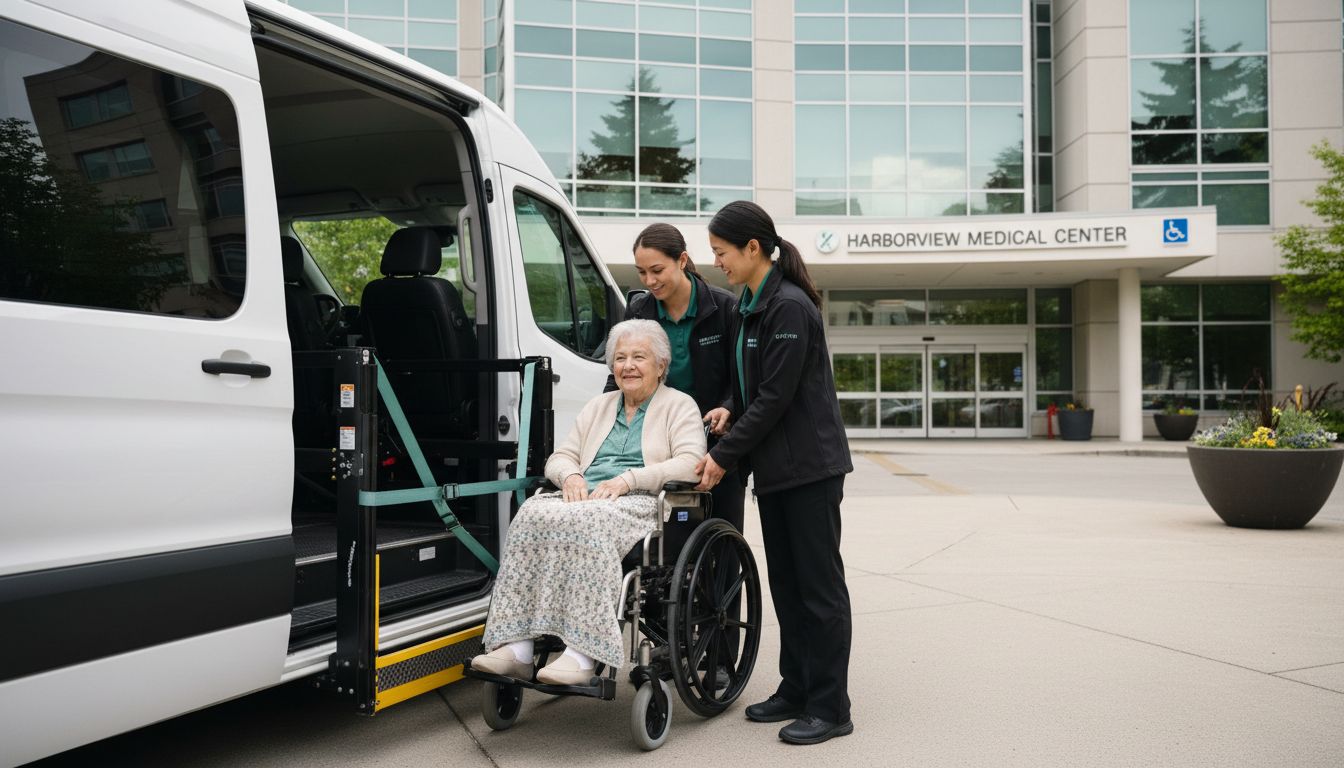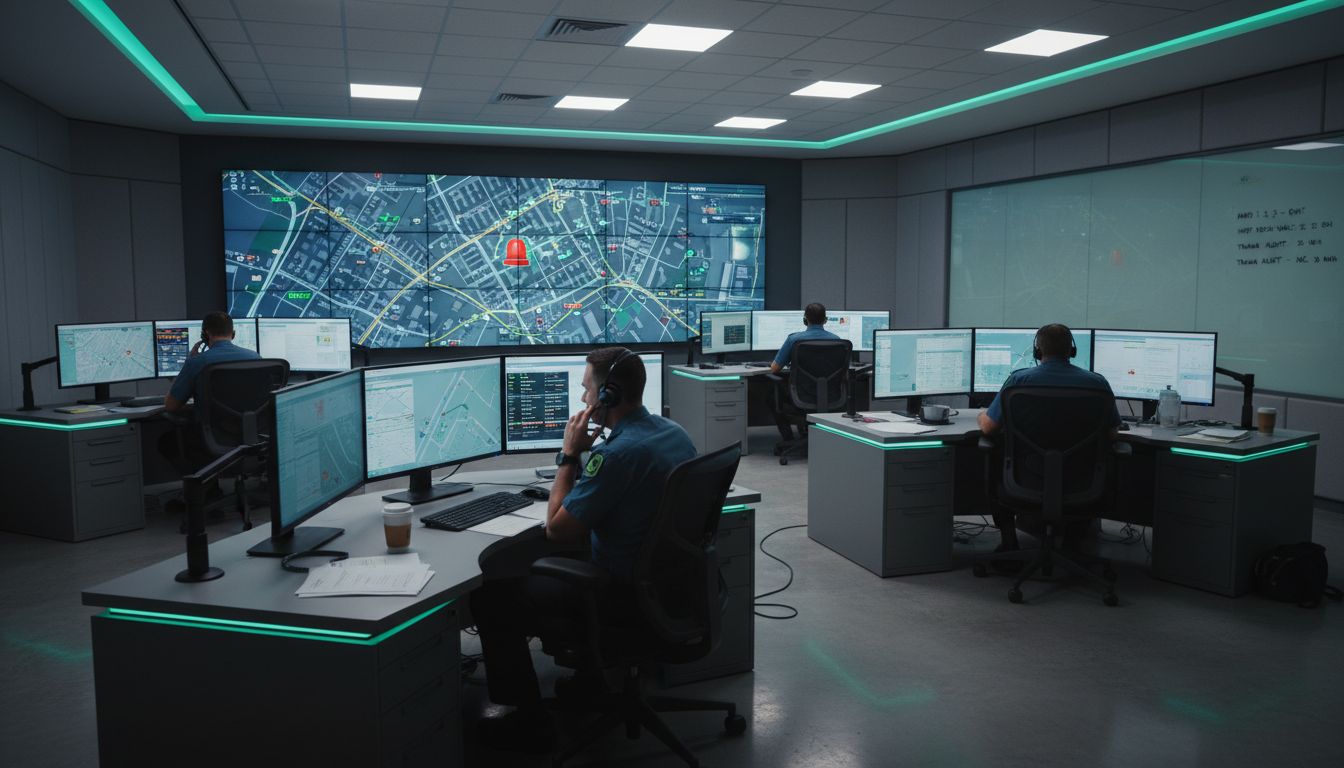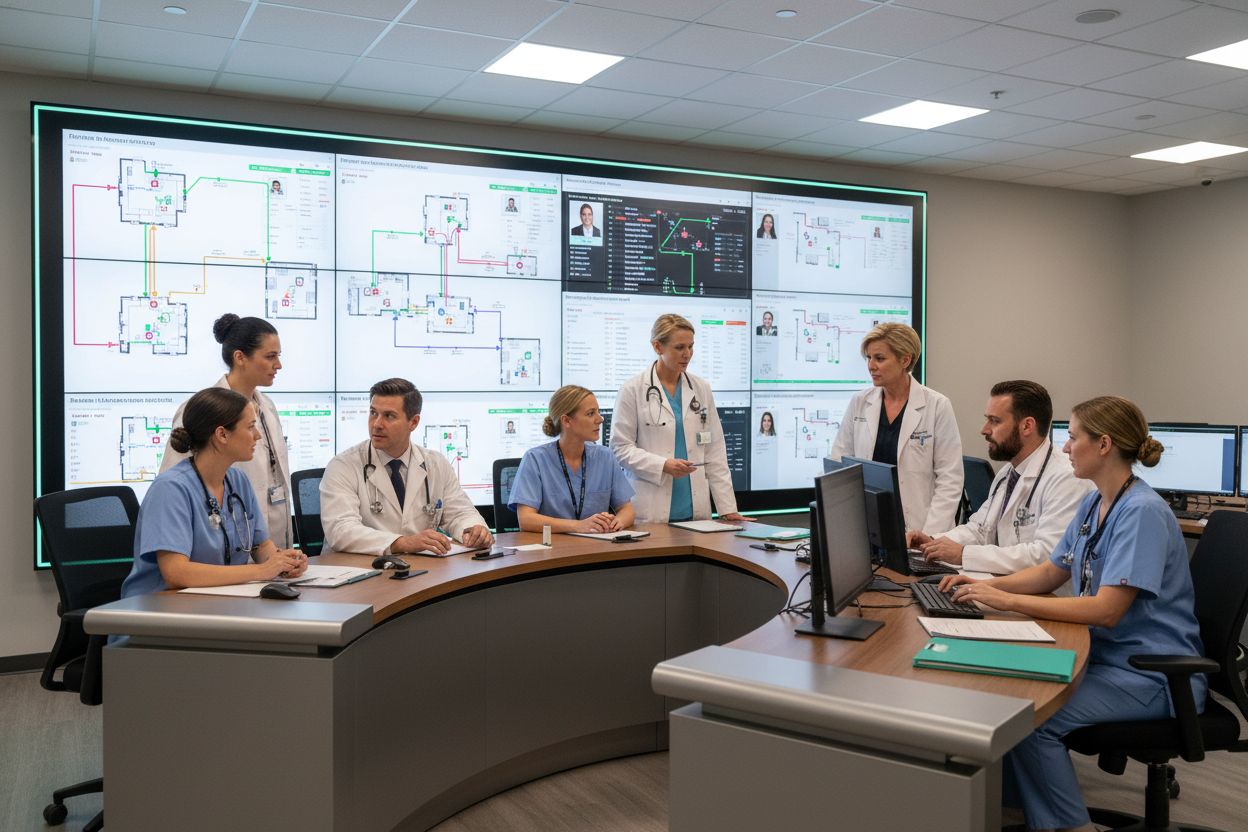Emergency Medical Transportation: Complete U.S. Guide
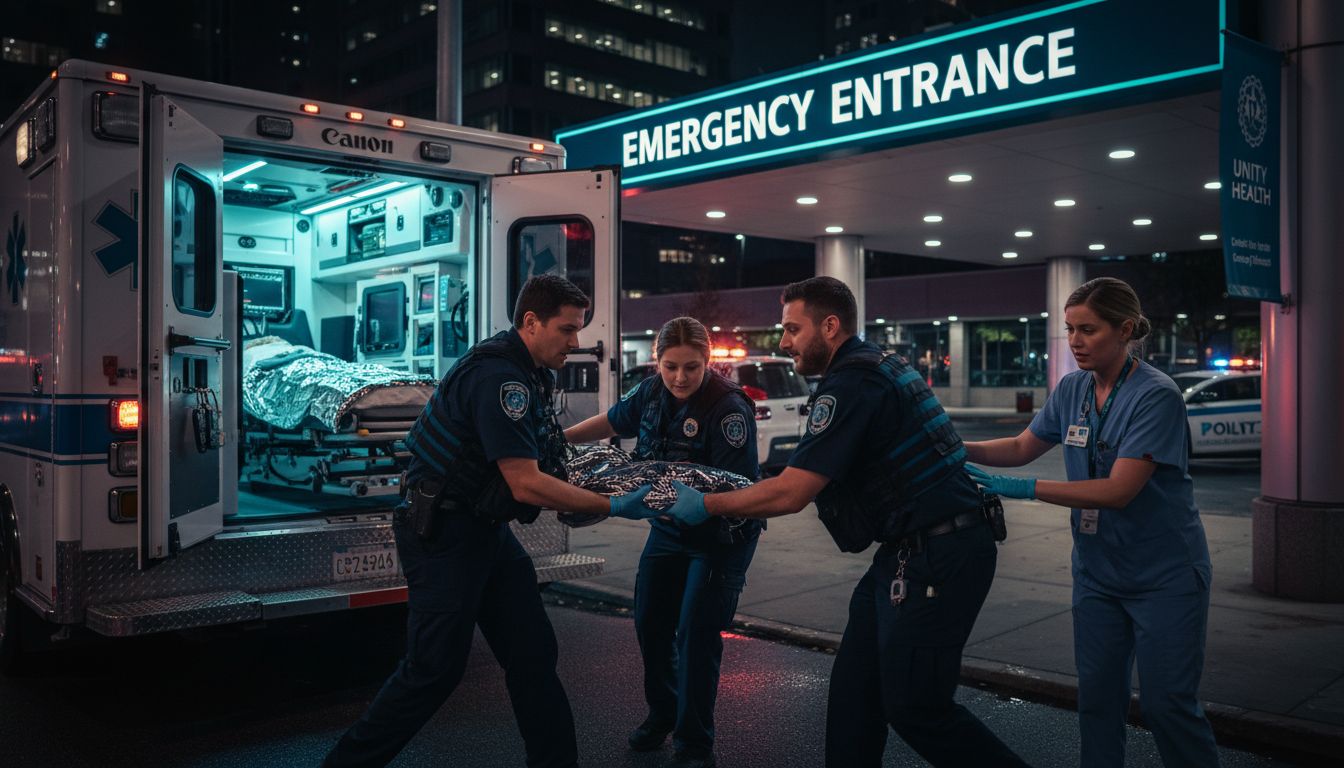
Every year, over 36 million emergency department visits result in the need for immediate medical transport. When lives hang in the balance, rapid and well-coordinated emergency transportation becomes a vital link between crisis and care. The world of emergency medical transportation combines advanced vehicles, expertly trained professionals, and strict regulations to deliver life-saving treatment on the move—giving patients a chance when every second counts.
Table of Contents
- Defining Emergency Medical Transportation
- Types Of Emergency Transport Vehicles
- How Emergency Transport Systems Operate
- Licensing And Regulatory Requirements
- Costs, Coverage, And Funding
- Risks, Challenges, And Best Practices
Key Takeaways
| Point | Details |
|---|---|
| Critical Role | Emergency medical transportation is essential for life-saving medical transit during emergencies. |
| Diverse Vehicles | Various emergency transport vehicles, such as BLS, ALS, and critical care units, address different medical needs. |
| Operational Network | Emergency transport systems involve coordinated efforts from dispatch to healthcare facilities for timely care. |
| Regulatory Compliance | Providers must adhere to rigorous licensing and training requirements to ensure safety and patient care standards. |
Defining Emergency Medical Transportation
Emergency medical transportation is a critical healthcare service designed to provide immediate, life-saving transit for individuals experiencing severe medical emergencies. According to the Centers for Medicare and Medicaid Services, this specialized transport involves the immediate movement of patients facing potentially life-threatening or disabling conditions to appropriate medical facilities.
Emergency medical transportation encompasses several key transportation modes, primarily including:
- Ambulance services
- Air medical evacuation (helicopter or fixed-wing aircraft)
- Advanced life support mobile units
The primary purpose of emergency medical transportation goes beyond simple movement. It represents a mobile extension of emergency medical care, where trained medical professionals provide crucial interventions during transit. Understanding Urgent Medical Transport: Key Concepts offers deeper insights into these critical healthcare logistics.
While many people associate emergency medical transportation exclusively with ambulances, the system is far more nuanced. These services operate 24/7, responding to a wide range of medical emergencies from cardiac events and severe trauma to stroke interventions and critical pediatric care. The goal is always the same: deliver patients to definitive medical care as quickly and safely as possible, with professional medical support throughout the journey.
Types Of Emergency Transport Vehicles
Emergency transport vehicles represent a critical lifeline in the medical response system, offering diverse capabilities to address various medical emergencies. According to EMS Shield, these vehicles range from basic life support ambulances to highly specialized emergency response units designed to handle complex medical scenarios.
The primary categories of emergency transport vehicles include:
- Basic Life Support (BLS) Ambulances: Standard patient transport vehicles with essential medical equipment
- Advanced Life Support (ALS) Ambulances: Equipped with advanced medical technologies and trained paramedics
- Critical Care Ambulances: Specialized units for transporting patients requiring intensive medical intervention
- EMS Supervisor Vehicles: Command and coordination units
- All-Terrain Emergency Vehicles: Designed for accessing challenging geographical locations
Interestingly, not all emergency vehicles are designed for patient transport. Understanding Non Emergency Transport Ambulance Services highlights that some EMS vehicles, known as non-transporting units or “squad cars,” are equipped to provide emergency medical services without patient transportation capabilities. These quick response vehicles, including motorcycles, bikes, and specialized support vehicles, can rapidly reach emergency scenes and initiate critical medical interventions before full transport units arrive.
The diversity of emergency transport vehicles ensures that medical professionals can respond effectively to a wide range of emergencies, from urban cardiac events to remote wilderness medical crises. Each vehicle type is meticulously designed with specific equipment, staffing, and capabilities to maximize patient care and survival chances during critical medical situations.
Here’s a comparison of common emergency transport vehicle types and their key features:
| Vehicle Type | Main Function | Typical Equipment | Staff Qualifications |
|---|---|---|---|
| BLS Ambulance | Basic patient transport | Basic medical supplies Oxygen |
EMT-Basic |
| ALS Ambulance | Advanced emergency care | Cardiac monitor IV equipment |
Paramedic EMT-Advanced |
| Critical Care Ambulance | Intensive medical intervention | Ventilators Infusion pumps |
Critical care nurse Paramedic |
| EMS Supervisor Vehicle | Command and scene coordination | Communication tools Safety gear |
Supervisor Experienced EMT |
| All-Terrain Emergency Vehicle | Access remote or rough areas | Compact medical kit Stretcher |
Specialty EMT Rescue worker |
| Non-Transporting Unit | Rapid on-scene medical intervention | First aid kit Defibrillator |
EMT or Paramedic |
How Emergency Transport Systems Operate
Emergency transport systems represent a sophisticated network of coordinated medical response mechanisms designed to provide immediate critical care during life-threatening situations. According to the Centers for Medicare and Medicaid Services, these systems function by rapidly transporting patients experiencing medical emergencies to appropriate healthcare facilities, ensuring timely and potentially life-saving medical interventions.
The operational framework of emergency transport systems typically involves several key components:
- Dispatch Centers: Centralized communication hubs that receive emergency calls
- First Responders: Trained medical personnel who provide immediate on-scene assessment
- Transport Units: Ambulances and specialized medical vehicles equipped for patient care
- Receiving Healthcare Facilities: Hospitals and medical centers prepared for immediate patient treatment
Fire & EMS Logistics Software highlights the critical role of advanced technological systems in streamlining emergency medical transportation. Modern systems utilize sophisticated communication technologies, GPS tracking, and real-time patient data transmission to optimize response times and medical interventions.
The entire process operates with remarkable precision. When an emergency call is received, dispatchers immediately assess the situation, determine the appropriate response level, and deploy the most suitable emergency transport vehicle. Paramedics and emergency medical technicians are trained to provide critical care during transit, stabilizing patients and preparing them for definitive hospital treatment. This seamless coordination between dispatch centers, first responders, transport units, and healthcare facilities ensures that patients receive the fastest and most appropriate medical attention possible during critical moments.
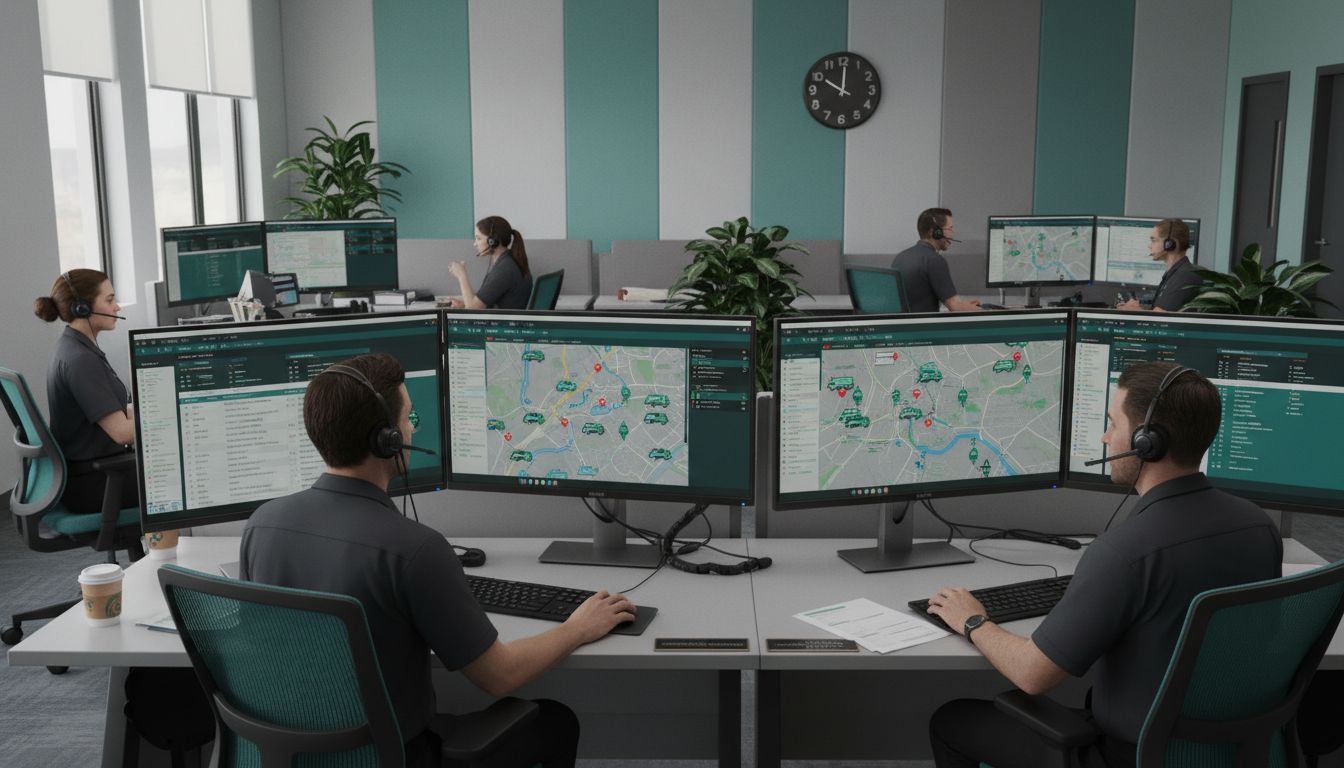
Licensing And Regulatory Requirements
Licensing and regulatory requirements for emergency medical transportation are complex and rigorous, designed to ensure the highest standards of patient safety and medical care. Emergency medical transport providers must navigate a intricate landscape of federal, state, and local regulations that govern every aspect of their operations, from vehicle specifications to personnel qualifications.
The key regulatory requirements typically include:
- Vehicle Certification: Meeting specific design and equipment standards
- Personnel Credentials: Mandatory professional certifications for medical staff
- Operational Compliance: Adherence to state and federal medical transport guidelines
- Insurance and Liability Requirements: Comprehensive coverage for patient and operational risks
- Ongoing Training and Recertification: Continuous professional development
Understanding Medical Transport Companies and Their Roles emphasizes the critical importance of maintaining strict compliance with these comprehensive regulatory frameworks. Emergency medical transport providers must demonstrate ongoing commitment to safety protocols, maintain meticulous documentation, and consistently update their practices to align with evolving healthcare regulations.
At the state level, licensing requirements can vary significantly, with each jurisdiction implementing its own specific standards for emergency medical transportation. Providers must obtain multiple certifications, including state-level emergency medical services (EMS) licenses, medical transport permits, and specific vehicle classifications. This complex regulatory environment ensures that every emergency medical transport operation meets the highest standards of patient care, safety, and professional medical intervention.
Costs, Coverage, And Funding
Emergency medical transportation represents a complex financial ecosystem with multiple funding sources and intricate reimbursement mechanisms. According to the Centers for Medicare and Medicaid Services, emergency transportation costs are typically billed directly to state Medicaid agencies by providers, with no advance approval required for genuine emergency situations.
The primary funding sources for emergency medical transportation include:
- Government Programs: Medicaid, Medicare, and state-funded healthcare programs
- Private Health Insurance: Commercial insurance coverage for emergency transport
- Patient Direct Payment: Out-of-pocket expenses for uninsured individuals
- Local and County Budgets: Public funding for emergency medical services
- Grant Programs: Federal and state grants supporting emergency medical infrastructure
7 Key Healthcare Cost Containment Strategies provides insights into managing the financial complexities of medical transportation. Medicaid specifically reimburses emergency transportation providers when they furnish services to eligible beneficiaries, following established regulatory guidelines that ensure comprehensive coverage for critical medical needs.
The actual cost of emergency medical transportation can vary dramatically based on multiple factors, including distance traveled, type of medical intervention required, and specific vehicle used. Patients may face significant financial challenges, with ambulance rides potentially costing between $400 to $1,200 for ground transport and substantially more for air medical evacuation. This financial complexity underscores the importance of understanding insurance coverage, exploring available financial assistance programs, and being proactive about medical transportation planning.
Risks, Challenges, And Best Practices
Emergency medical transportation involves numerous complex risks and challenges that require strategic management and continuous improvement. According to recent research, critical safety concerns range from operational complexities to potential human error, particularly in high-stakes medical transport scenarios like air ambulance services.
The primary risks and challenges in emergency medical transportation include:
- Equipment Reliability: Ensuring medical and transport equipment functions perfectly
- Personnel Training: Maintaining highest standards of medical and operational competence
- Communication Protocols: Establishing clear, efficient communication channels
- Patient Safety: Minimizing risks during high-stress medical transport situations
- Technological Integration: Leveraging advanced systems for improved response
Common Credentialing Hurdles: Turn Risk Into Reliability emphasizes the importance of transforming potential risks into systematic reliability. Non-transporting EMS vehicles, for instance, play a critical role in improving response times and resource efficiency, but require careful integration to ensure comprehensive patient care.
Best practices for mitigating these risks involve comprehensive training programs, advanced technological solutions, and robust emergency response protocols. This includes continuous professional development for medical personnel, regular equipment maintenance, implementing redundant communication systems, and developing adaptive response strategies that can handle unexpected medical emergencies. The goal is creating a resilient emergency medical transportation system that prioritizes patient safety, operational efficiency, and swift, effective medical interventions.
Transform Emergency Medical Transportation with Cutting-Edge Patient Logistics
Emergency medical transportation faces serious challenges every day, from coordinating urgent dispatch and ensuring real-time communication to managing diverse vehicle types and maintaining compliance with strict regulations. This article highlights the vital need for seamless integration of these complex operations to improve response times, reduce operational risks, and ultimately save lives. The pressure to provide rapid, coordinated care while optimizing resources is immense for healthcare providers, payers, and emergency services alike.
VectorCare’s comprehensive digital platform is designed precisely to address these pain points. With features like AI-driven dispatching, real-time updates, and scheduling optimization, we empower organizations to streamline patient transportation, reduce delays, and maintain strict regulatory compliance effortlessly. Our user-friendly no-code workflows and secure communication channels enhance collaboration among EMS teams, hospitals, and regional agencies, turning logistical risks into reliable, life-saving actions.
Ready to advance your emergency medical transport operations and deliver faster, safer care? Discover how VectorCare can help you overcome critical challenges in emergency services.

Explore the future of efficient patient logistics today at VectorCare. Learn more about how we support Fire & EMS departments and improve the coordination of urgent medical transport with cutting-edge solutions. Take the next step in elevating your emergency response capabilities now.
Frequently Asked Questions
What is emergency medical transportation?
Emergency medical transportation is a specialized healthcare service that provides immediate transit to individuals experiencing severe medical emergencies, facilitating rapid access to medical facilities and care.
What types of vehicles are used for emergency medical transportation?
Emergency medical transportation uses various vehicles, including Basic Life Support (BLS) ambulances, Advanced Life Support (ALS) ambulances, Critical Care ambulances, and air medical evacuation units, each equipped for specific medical scenarios.
How do emergency transport systems operate?
Emergency transport systems operate through a coordinated network involving dispatch centers, first responders, specialized transport units, and receiving healthcare facilities to ensure rapid and efficient patient care during medical emergencies.
What are the costs and funding sources for emergency medical transportation?
The costs of emergency medical transportation can vary greatly and are covered through various funding sources, including government programs (Medicaid, Medicare), private health insurance, patient direct payments, and local government budgets.

